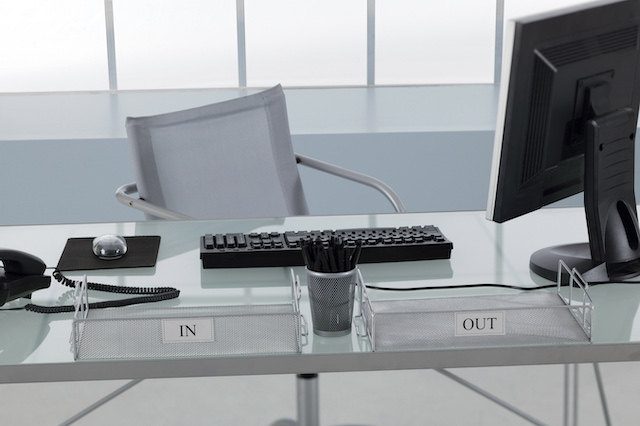The Art In The World Of Coffee Brewing
Coffee is a beverage loved by millions around the world. It is an integral part of daily routines, bringing comfort, warmth, and energy to start the day. From the moment the beans are ground to the last sip, each step plays a role in shaping the final experience. The process of brewing coffee involves more than just boiling water and adding grounds. A variety of factors come into play to make the perfect cup.
Understanding coffee beans
The foundation of great coffee starts with high-quality beans. The variety of beans significantly influences flavor, aroma, and strength. Arabica and Robusta are the two primary coffee bean species, with Arabica being the most popular. Arabica beans are known for their smooth, mild flavor profile, while Robusta beans offer a stronger, more bitter taste. The region where the beans are grown also impacts their characteristics. Coffee from Latin America tends to have a bright, fruity taste, while African beans often exhibit floral and citrus notes.
Freshness is another key factor. Coffee beans start to lose their flavor and aroma shortly after being ground. Grinding the beans just before brewing preserves the essential oils and flavours, ensuring a richer cup.
Roasting and its impact on flavour
Once the beans are harvested, they are roasted to bring out their distinct flavors. The roasting process involves heating the beans to high temperatures, which causes chemical reactions that release aromatic compounds. Light roasts retain the most natural flavors, often showcasing fruity or floral notes. Medium roasts offer a balance between sweetness and acidity. Dark roasts, on the other hand, are characterized by bold, smoky flavors.
Roasting time, temperature, and method all influence the final taste. For example, beans roasted at higher temperatures for longer periods will develop a deeper, more intense flavor. The type of roast you choose will depend on personal preferences, and experimenting with different roasts can lead to the discovery of new favourites.
Grinding coffee
The way coffee is ground is just as important as the beans themselves. The grind size determines how quickly water interacts with the coffee, affecting extraction. A fine grind is ideal for espresso, while a coarser grind is best for French press or cold brew. Finding the right consistency is essential for balanced extraction. Too fine a grind can lead to over-extraction, resulting in bitterness. Too coarse a grind may result in under-extraction, leaving the coffee weak and underwhelming.
For the best results, invest in a good quality grinder. Burr grinders are often preferred over blade grinders because they provide a more consistent grind size. This ensures that all the coffee grounds extract at the same rate, leading to a smoother cup.
Brewing methods
There are numerous ways to brew coffee, each offering unique characteristics. The method you choose can drastically impact the flavor and strength of the final cup.
One popular brewing method is drip coffee. This method involves hot water slowly filtering through the coffee grounds, extracting the flavors as it passes through. Drip coffee makers are convenient and easy to use, making them a favorite for many households. However, they can sometimes produce coffee that lacks the complexity of other brewing methods.
Espresso, another common brewing technique, is known for its rich, concentrated flavor. The process uses high-pressure water to force through finely-ground coffee, producing a small but powerful shot of coffee. Espresso forms the base for drinks like lattes, cappuccinos, and Americanos, all of which vary in strength and flavor.
French press coffee involves steeping coarsely ground coffee in hot water for several minutes before pressing it through a metal filter. This method results in a full-bodied cup with a strong flavor. It is a favorite among those who enjoy a more intense coffee experience.
Pour-over brewing is another method that allows for greater control over the brewing process. It involves slowly pouring hot water over coffee grounds, allowing the water to extract the flavors gradually. This technique is often used by coffee enthusiasts who appreciate the precision it offers.
Water quality
The quality of the water used in brewing is often overlooked, but it plays a significant role in the final taste. Ideally, water should be clean and free of impurities. Tap water, depending on location, may contain minerals or chlorine that can affect the taste of coffee. Using filtered or bottled water can make a noticeable difference in the flavor profile.
Water temperature is also crucial. Coffee should be brewed between 195°F and 205°F (90°C to 96°C). Water that is too hot can cause over-extraction, leading to bitterness, while water that is too cool can result in under-extraction, making the coffee weak and underwhelming.
The importance of coffee-to-water ratio
The ratio of coffee grounds to water greatly influences the strength and flavor of the coffee. A higher coffee-to-water ratio will produce a more intense, full-bodied cup, while a lower ratio results in a milder, lighter brew. Experimenting with different ratios can help you find the perfect balance for your taste.
For drip coffee makers and pour-over methods, a general guideline is to use 1 to 2 tablespoons of coffee per 6 ounces of water. For French press brewing, a coarser grind and a higher ratio of coffee to water will produce a more robust cup.
The brewing time
The time spent brewing coffee impacts the extraction process. For methods like French press and pour-over, the brew time can range from 3 to 5 minutes, depending on the grind size and the amount of coffee used. Espresso, by contrast, is brewed quickly, taking just 20 to 30 seconds to extract the full flavor from the grounds.
Longer brewing times generally result in a stronger, more full-bodied cup, but over-brewing can lead to undesirable bitterness. Finding the perfect brewing time for each method is essential for achieving a balanced and flavorful cup of coffee.
Serving and storing coffee
Once brewed, coffee should be served immediately for the best experience. The aroma and flavor of coffee begin to degrade over time, so drinking it while it is fresh ensures the richest taste. If you must store brewed coffee, try to consume it within an hour or two to maintain optimal flavor.
For storing coffee beans, keep them in an airtight container in a cool, dark place. Exposure to air, light, and heat accelerates the degradation of the beans. It is also best to avoid refrigerating or freezing coffee, as this can cause moisture to seep into the beans, negatively affecting the taste.
A coffee lover’s final sip
Coffee is not only a drink but also an experience. From selecting the right beans to choosing the best brewing method, every step contributes to the final cup. Each person’s preferences differ, and the beauty of coffee lies in the endless possibilities for customization.
Experimenting with different brewing techniques, grind sizes, and coffee varieties allows you to explore new flavors and find what works best for you. Whether you enjoy a bold espresso shot, a creamy cappuccino, or a smooth pour-over, the world of coffee offers a vast array of options to satisfy every taste.
Ritual of coffee
For many, coffee represents more than just a morning pick-me-up. It is a ritual, a moment of peace before starting the day. Whether brewed at home or enjoyed at a favorite café, the act of making and drinking coffee provides a sense of comfort and connection. It is a pause from the busy world, a chance to enjoy a simple pleasure. The ritual of coffee has a way of bringing people together, whether for conversations with friends, moments of reflection, or simply the joy of savoring a well-brewed cup.



